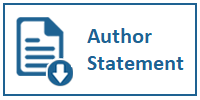From Tradition to Innovation: Mind Map Generation in Higher Education
DOI:
https://doi.org/10.31937/si.v14i2.3432Abstract
In higher education, effectively delivering complex topics to students with diverse learning preferences remains a pressing challenge. This comprehensive survey delves into the utilization of mind maps as an innovative instructional tool to navigate this challenge. From 2003 to 2022, we review the implementation of mind maps in higher education, highlighting aspects such as the year of the paper, the techniques employed for mind mapping, target audiences, objectives, and outcomes. Mind maps, centralized and radial visual techniques, have been recognized for their capacity to enhance memory retention, comprehension, and active student engagement. We identify two primary scenarios: Learner-Driven and Lecturer-Driven Development. While students employ mind maps for revision and understanding, lecturers utilize them as visual aids to structure content and elucidate intricate relationships. The paper underscores the need for inclusivity, accommodating varied learning styles, and integrating mind maps into a broader educational toolkit. Through this study, we uncover research gaps and propose future avenues to further amplify the potential of mind maps in academia.
Downloads
Downloads
Published
How to Cite
Issue
Section
License
Authors retain copyright and grant the journal right of first publication with the work simultaneously licensed under a Creative Commons Attribution-ShareAlike International License (CC-BY-SA 4.0) that allows others to share the work with an acknowledgement of the work's authorship and initial publication in this journal.
Authors are able to enter into separate, additional contractual arrangements for the non-exclusive distribution of the journal's published version of the work (e.g., post it to an institutional repository or publish it in a book), with an acknowledgement of its initial publication in this journal.
Copyright without Restrictions
The journal allows the author(s) to hold the copyright without restrictions and will retain publishing rights without restrictions.
The submitted papers are assumed to contain no proprietary material unprotected by patent or patent application; responsibility for technical content and for protection of proprietary material rests solely with the author(s) and their organizations and is not the responsibility of the ULTIMA InfoSys or its Editorial Staff. The main (first/corresponding) author is responsible for ensuring that the article has been seen and approved by all the other authors. It is the responsibility of the author to obtain all necessary copyright release permissions for the use of any copyrighted materials in the manuscript prior to the submission.















